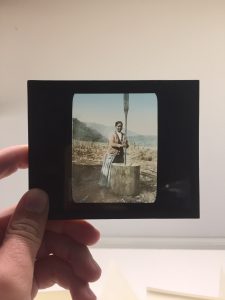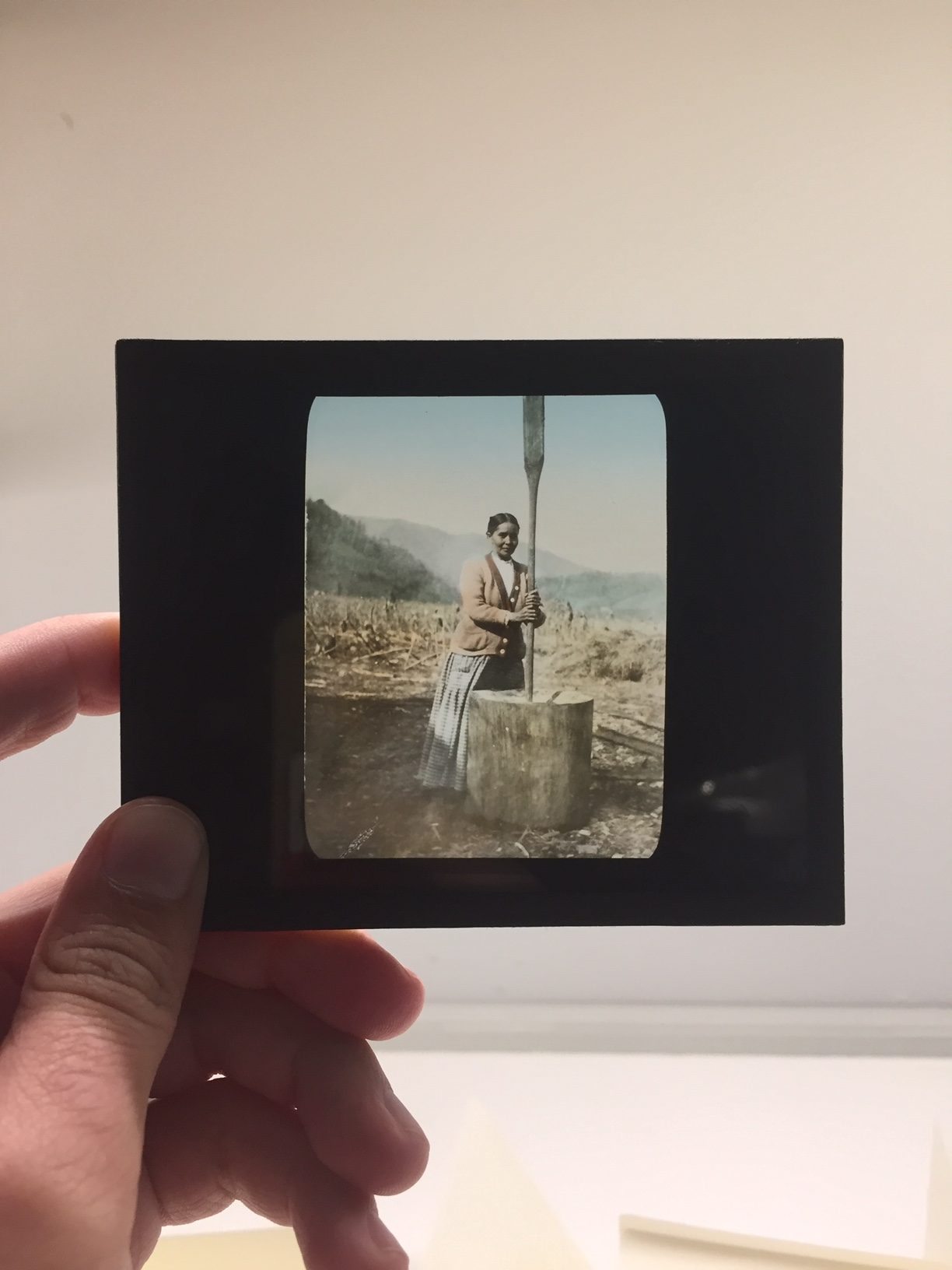This week I began my work as the Martin L. Levitt Fellow at the American Philosophical Society. For those of you do not know, the American Philosophical Society (APS) was founded in 1743 by Benjamin Franklin and John Bartram, and has since developed an international reputation as a distinguished research organization and collaborative community of scholars. The APS Library departments work to conserve and promote sustainable accessibility to the historic materials in its collections. For the next several weeks I will be working with the Center for Native American and Indigenous Research (CNAIR) and the Center for Digital Scholarship to create an enhanced collection guide to the photograph collections of the anthropologist Frank Speck. The Speck Papers contain one of the largest and most wide-ranging photograph collections relating to Indigenous peoples at the APS Library. It contains approximately 4200 photographs and 450 lantern slides taken from the 1900s to 1940s, relating to dozens of Indigenous peoples throughout the Southeast and Northeast United States as well as Ontario, Quebec, and Labrador.
This week I was able to digitize and create metadata for 150 of the Speck lantern slides which related to a wide array of Indigenous people groups including the Beothuk, Catawba, Cherokee, Creek, Yuchi, Inuit, Houma, and Iroquois. I am also in the process of trying to familiarize myself with Speck, his methodologies, and his work. For starters, Speck was an anthropologist and professor at the University of Pennsylvania. Credited as being one of the most prolific anthropologists of his time, Speck’s projects were seen as part of a greater effort to “salvage” information about “vanishing” Indigenous cultures. Speck worked with a number of Indigenous partners who agreed to share information and/or to be photographed. Margaret Bruchac, who teaches anthropology at the University of Pennsylania, dives into the problematic nature of these relationships in her book, Savage Kin: Indigenous Informants and American Antrhopologists, which I look forward to reading in the near future.
Due to the sheer quantity of photographs and other materials, the Speck collection can best be described as somewhat chaotic. The lantern slides are organized by ethnic group and geography, but often lack contextual information. Out of the 150 photographs I scanned this week, I only counted 10 people referred to by name. It would be really interesting to see if collaboration with Indigenous communities could lead to the identification of more individuals featured in the photographs. I know that if I was a descendant of any of these individuals, I would love to have a copy of their photograph. I wonder if the descendants even know that these photographs exist. This causes me to question how accessible these collections are to people that do not have the ability or means to travel all the way to Philadelphia to search through the photographs themselves. Regardless of Speck’s intentions, I am glad these photos are being digitized for more people to have access to.

***All opinions and reflections are my own and do not reflect those of the American Philosophical Society or its employees.***
Hours Logged: 14
